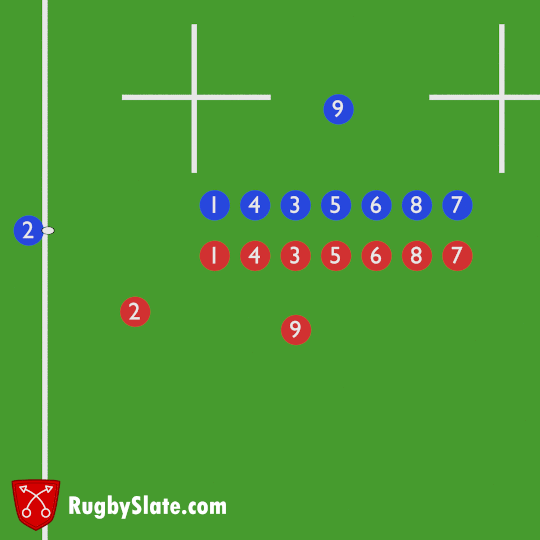What To Do When: Losing At The Lineout
The lineout is one of the core parts of the game of rugby and having difficulties at the lineout can have a big impact on how the game goes. The lineout can’t really be avoided however if the team are struggling to retain the ball on their lineout then maybe when given a penalty option, they could select not going for a lineout even if it is not the best tactical decision.
In terms of the opposition lineout, being outmatched by the other team is not too much of an issue. Having the opposition winning 100% of their lineouts is not the best way for a game to go but it does not give the opposition a huge advantage. The best strategy to combat this is to not even compete at the lineout and instead have the best open field defenders (normally the back row) at the back of the lineout so that when the opposition 9 passes the ball out to the backs they are able to quickly turn to defending.
What can be damaging for the defence is if the opposition is very good at winning the lineout and mauling. This can be an extremely effective technique for picking up meters and winning penalties. There is two ways in which this can be challenged, the first is to stop the maul from even forming. To do this the jumper, when they land, need to be “sacked”; this is where they are brought to ground before the opposition can secure them and form the maul.
The second way to challenge the “catch and drive” technique is to maul with a focus of pushing the opposition towards the touchline. This may mean that some ground is lost but by getting the ball out of play means that the possession is overturned. This strategy can be a bit risky as penalties can be given for joining the maul in the side and also if the ball doesn’t go out, the opposition will have gained some meters and could potentially be driving on further down the field.
If a team is struggling with their own attacking lineout, this can be difficult for the whole team as the backs will have to be ready to quickly form a defensive line if the forwards lose the ball. It is important to recognise why the forwards are losing the lineout; is it poor throwing, are the opposition better at jumping/lifting or do they have one very good, tall pod at the front? Once the reason for the problem is fully understood then changes can be made.
If it is the case that one opposition player is very good at disrupting the lineout then dummy moves may work out well to get that player to jump early and therefore out of the way for when the ball comes in. A shortened lineout may also help with this as to limit how many pods the opposition have.
If the hooker is struggling with throwing in then the best strategy is to keep it simple and throw to the front. Always throwing to the same position will be read very quickly by the opposition so to combat this the forwards should look to be quick at the lineout. Potentially walking into the lineout and then immediately getting the jumper up and ball to them.



